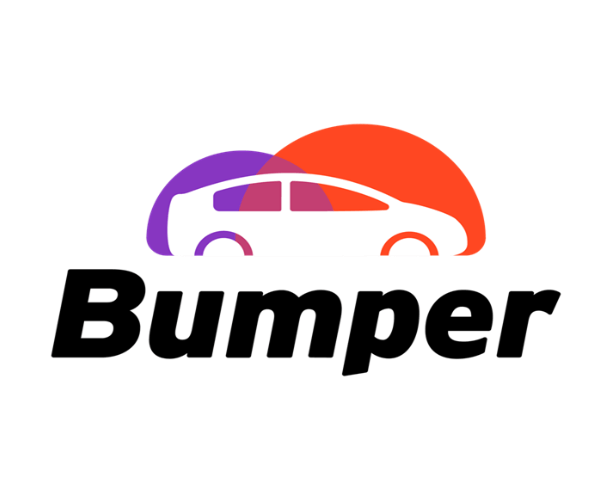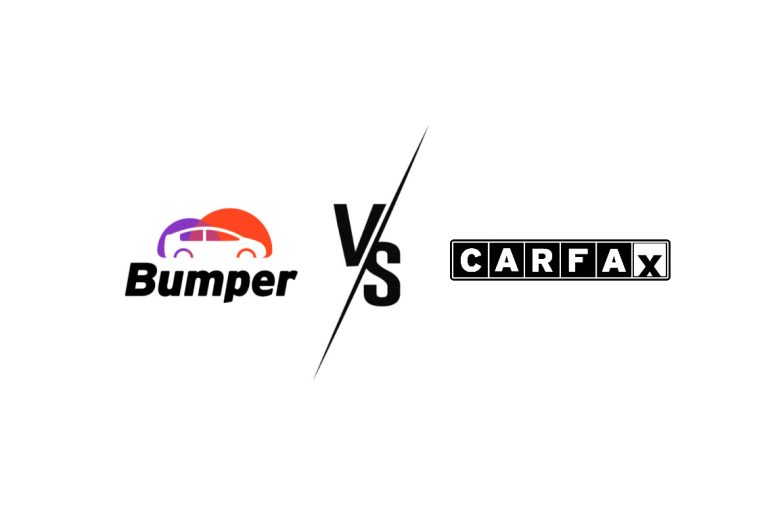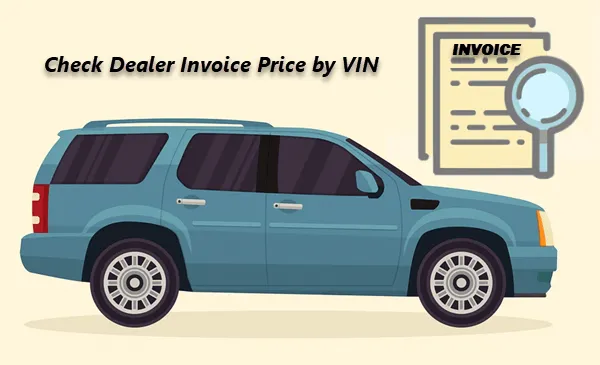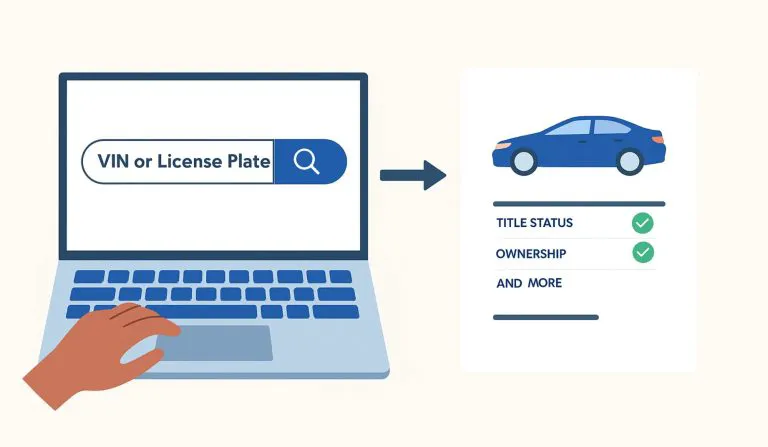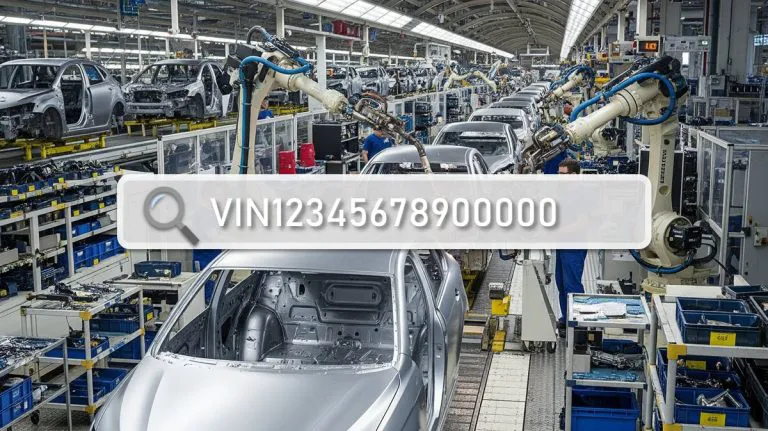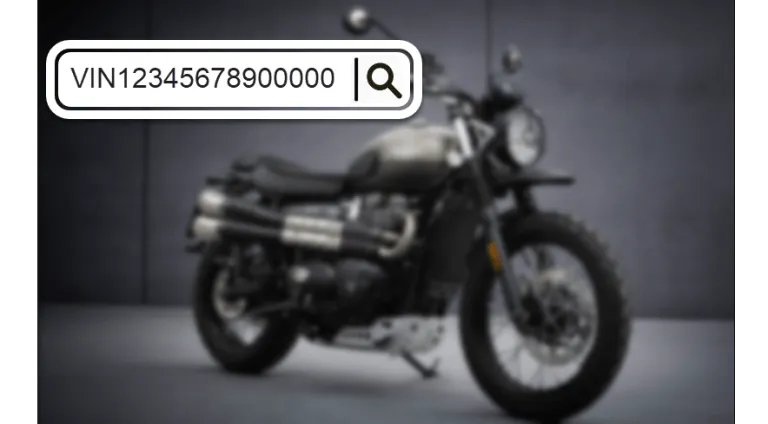How to Find Original MSRP by VIN
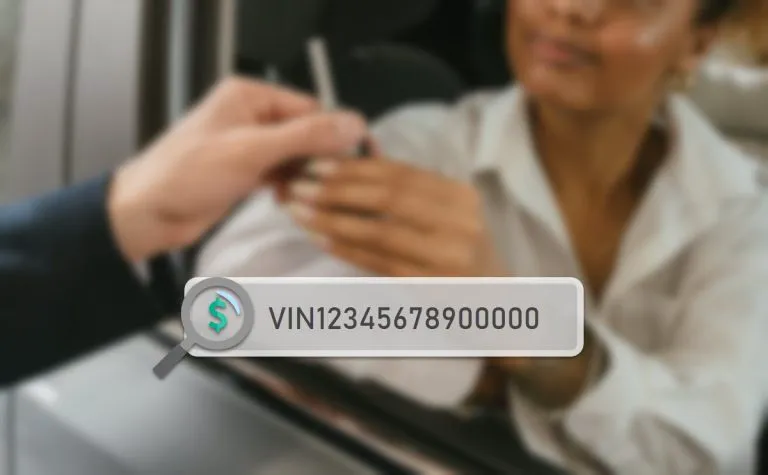
The MSRP, or Manufacturer’s Suggested Retail Price, is the sticker price a car manufacturer recommends to dealerships. It’s a crucial baseline for negotiations, whether you’re buying new or used. Experienced car buyers will tell you it’s a key piece of information{{r/whatcarsshouldIbuy [Bubbly-Novel-8013]. (2025, April 3). I negotiate car deals for a living – here are the top 5 things buyers get wrong. [Online forum post]. Reddit. https://www.reddit.com/r/whatcarshouldIbuy/comments/1jpsh3g/i_negotiate_car_deals_for_a_living_here_are_the/}}.
Usually, you’ll find the MSRP right on the window sticker (that’s the Monroney label), but sometimes that sticker is missing. No worries, though! We’ll show you how to easily find the original MSRP using the VIN.
Quick Guide
Before we start…
To make your search easier, have your car’s VIN ready. Our guide can help you locate it.
It’s also a good idea to know the year, make, and model of your vehicle, which you can find using this tool.
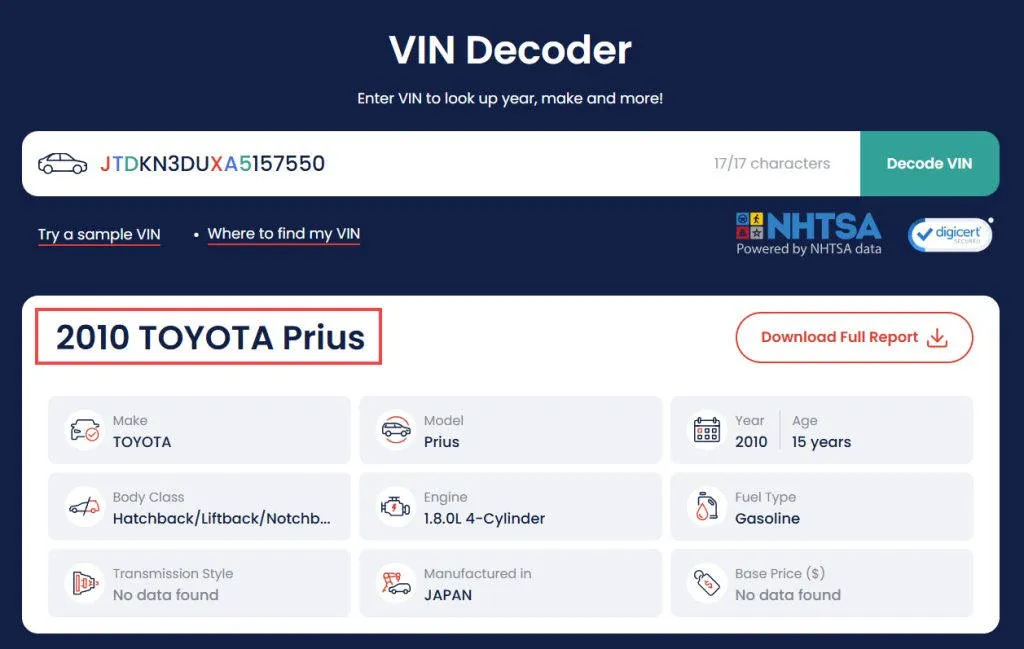
1. Use a VIN decoder
Using a VIN decoder is one of the simplest ways to find the MSRP of a vehicle. It works like this: you enter a VIN, and the decoder can generate a report with all sorts of valuable information.
Now, there are tons of VIN decoders out there, and they’re not all created equal. Some are better at certain things than others. We’ve tested a bunch of them and found two that are particularly good at digging up MSRPs.
Decode This
Decode This is a handy tool for checking vehicle specs, including pricing. Just pop in the VIN, and it’ll give you the MSRP (if it’s available) along with some other useful details. It’s a quick and easy way to get a snapshot of a car’s basic information.
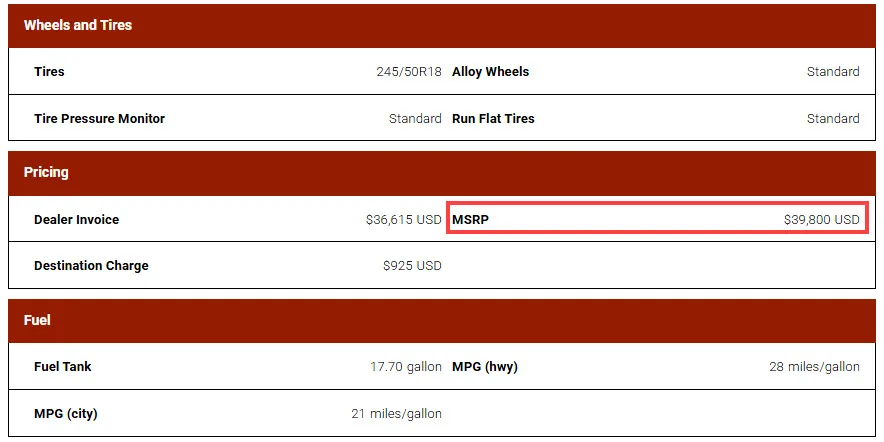
But as a free tool, it has its limitations.
Sometimes it fails to find information, especially for older vehicles or less common makes and models. Plus, the information it provides isn’t completely comprehensive. For example, it won’t show you details about packages and installed options. If you need a more robust option, keep reading.
Bumper
Bumper is a powerful VIN decoder that goes beyond the basics. It provides in-depth pricing and market value information, including the MSRP and the invoice price. This is largely due to its access to a vast network of data sources, including information directly from major car manufacturers.
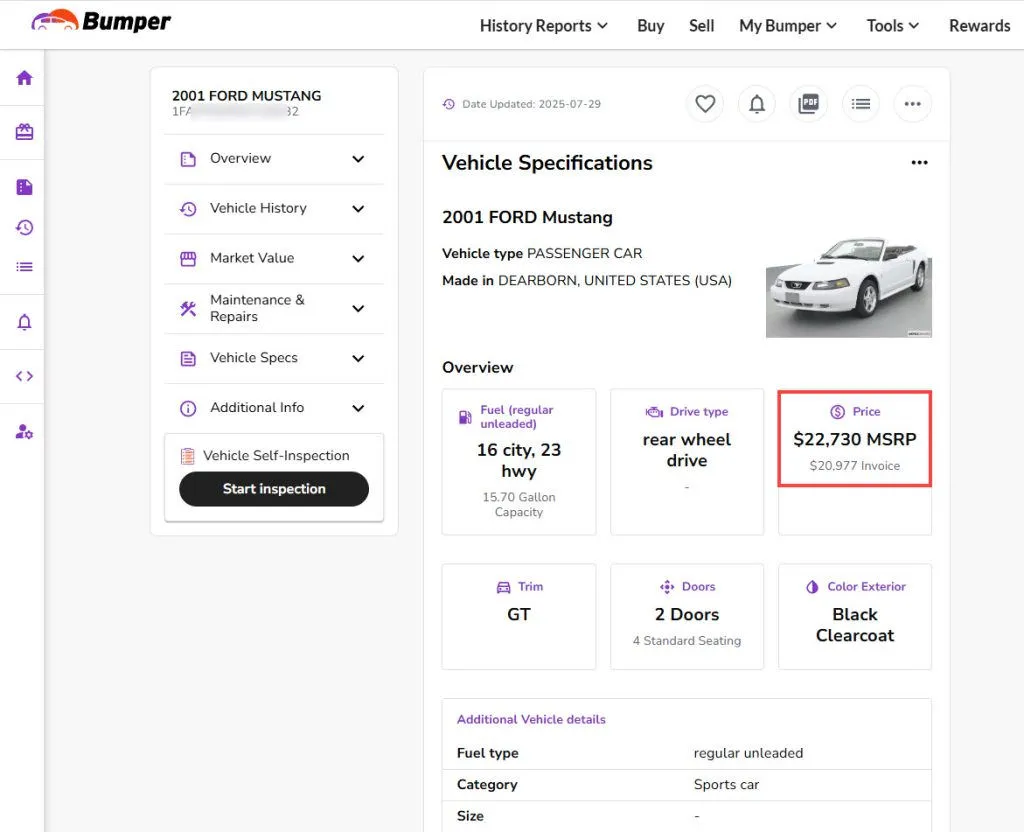
But it doesn’t stop there. Bumper also details the vehicle’s packages and installed options, along with all the basic specs you’d typically find on the window sticker – all conveniently located in one place.
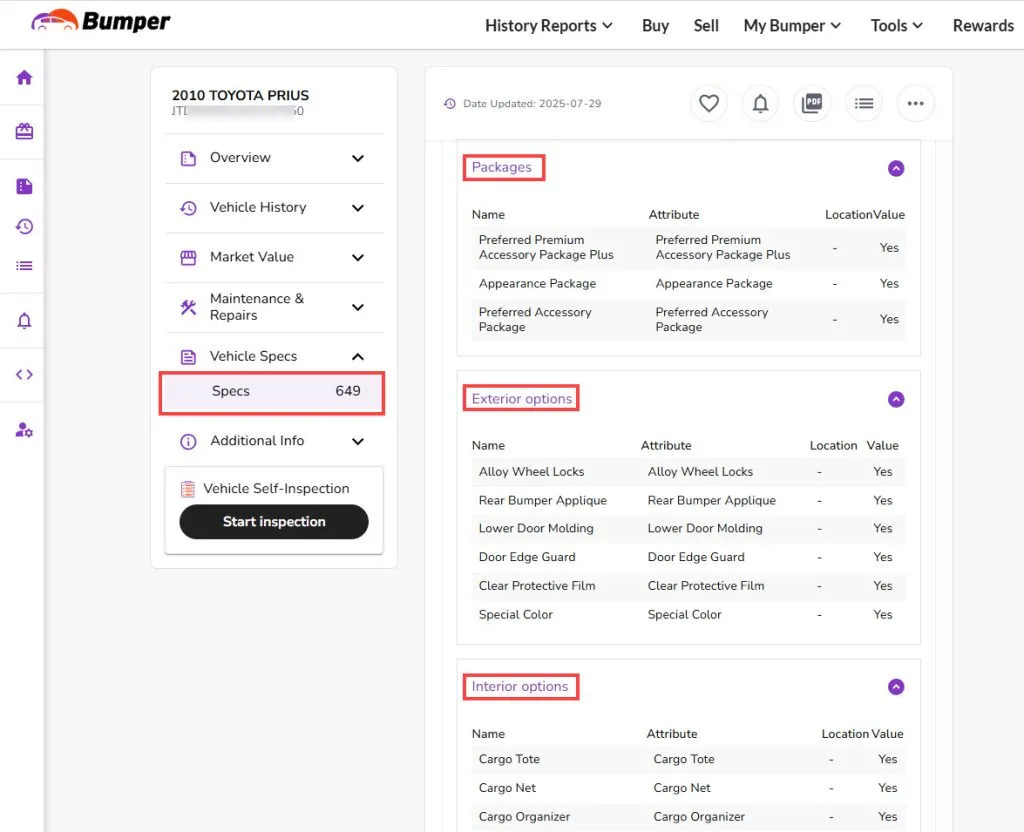
What’s more, Bumper can paint a full picture of a vehicle’s history, like accidents{{Bumper reports are based on data available and may not include historical accident records in all states.}}, damage, or title issues. It can also offer an extensive history of past sales listings and market value analysis, which is incredibly helpful when you’re shopping for a used car and want to make sure you’re getting a fair price.
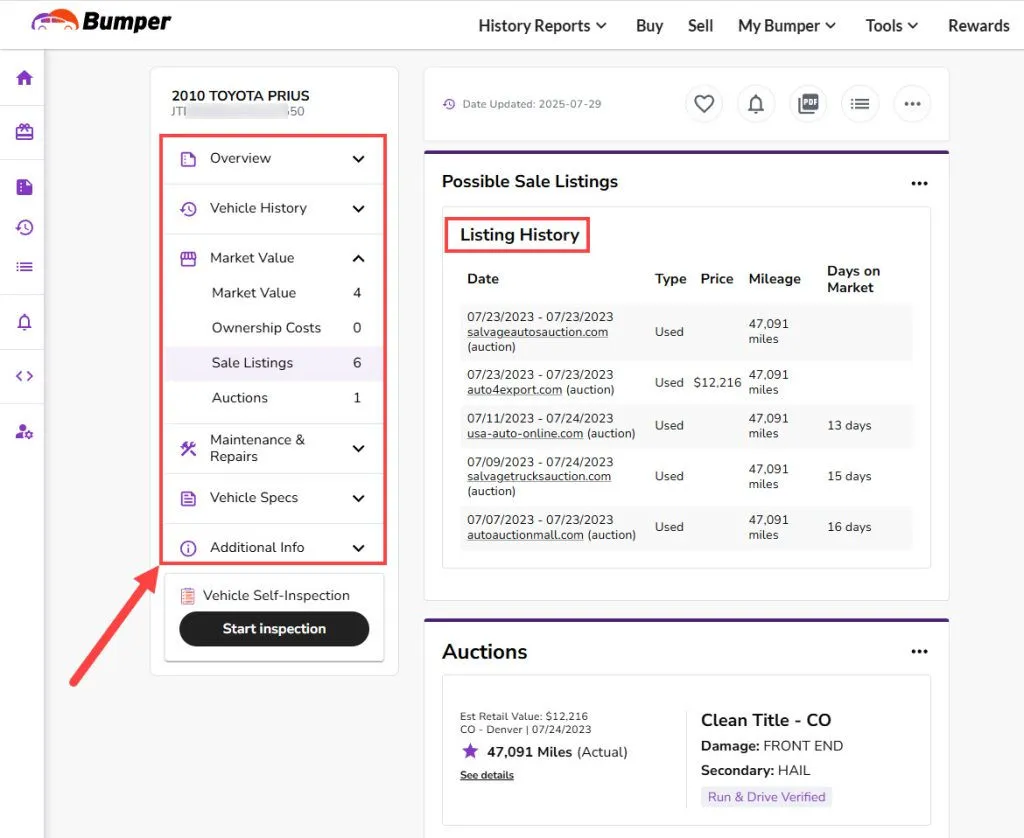
It’s worth noting that Bumper is a subscription service, costing $27.99 per month, but that subscription allows you up to 50 VIN searches. Compared to big names like CARFAX and AutoCheck, which charge per report (often at a higher cost), Bumper is a better value if you’re planning to research multiple vehicles.
Community-supported VIN decoders
Another place you might find a vehicle’s MSRP is on a community-supported VIN decoder. These are free tools often found on enthusiast car forums that can pull up basic specs from a VIN.
For example, the decoder on the Chevrolet Forum (which also works for other brands) may list the MSRP under a section called “Original Pricing”.
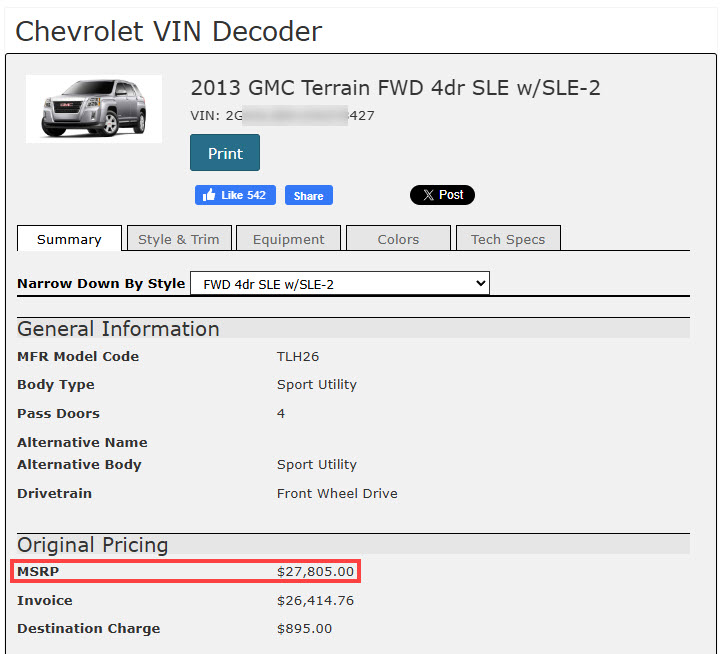
2. Buy the window sticker and check
When buying a new car, the MSRP is easy to find – it’s printed right on the window sticker{{In the US, federal law requires the window sticker to be affixed to all new vehicles.}}. However, with used cars, the original sticker is often long gone. Luckily, you can usually get a copy from a few different sources. Here are some options for obtaining a window sticker for a used vehicle:
- CarEdge (free)
CarEdge is a handy online car buying site that lets you look up window stickers using your VIN for free. You can easily find the MSRP there. In our experience, it covers a pretty wide range of makes and models (though it doesn’t include all-electric brands). The only catch is you’ll need to sign up with your email address.
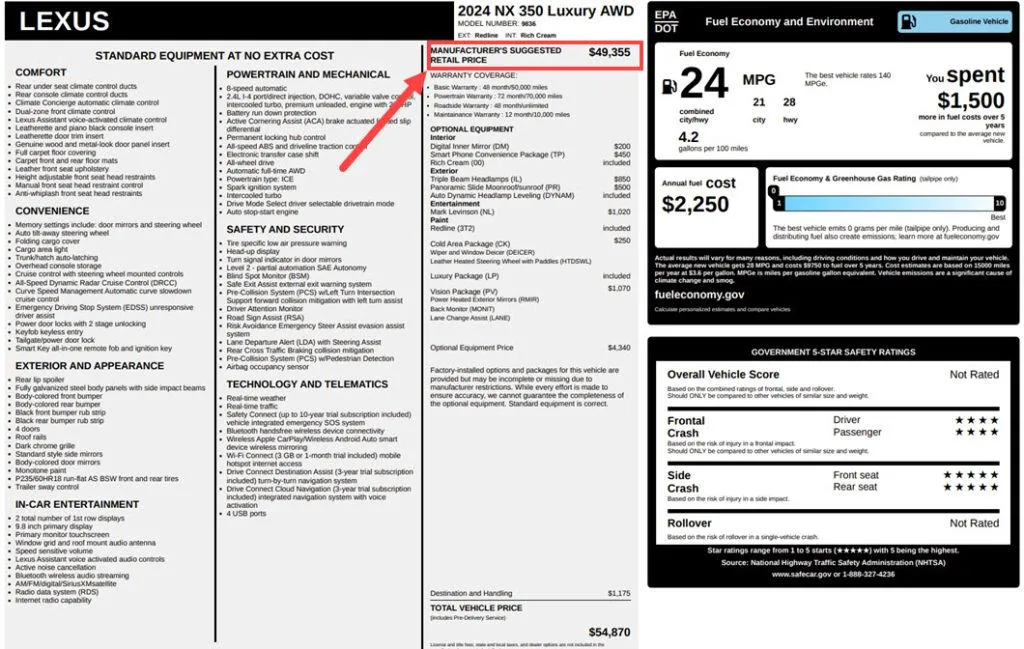
- MonroneyLabels (paid)
If you need the actual window sticker itself, MonroneyLabels is a widely-mentioned option. Like CarEdge, it supports most major car brands. It’s a paid service, costing $9.99 per report, but it offers more OEM-authentic info and some nice extras, like the ability to customize the printout. This can be useful if you’re selling your car and want to present it in the best light.
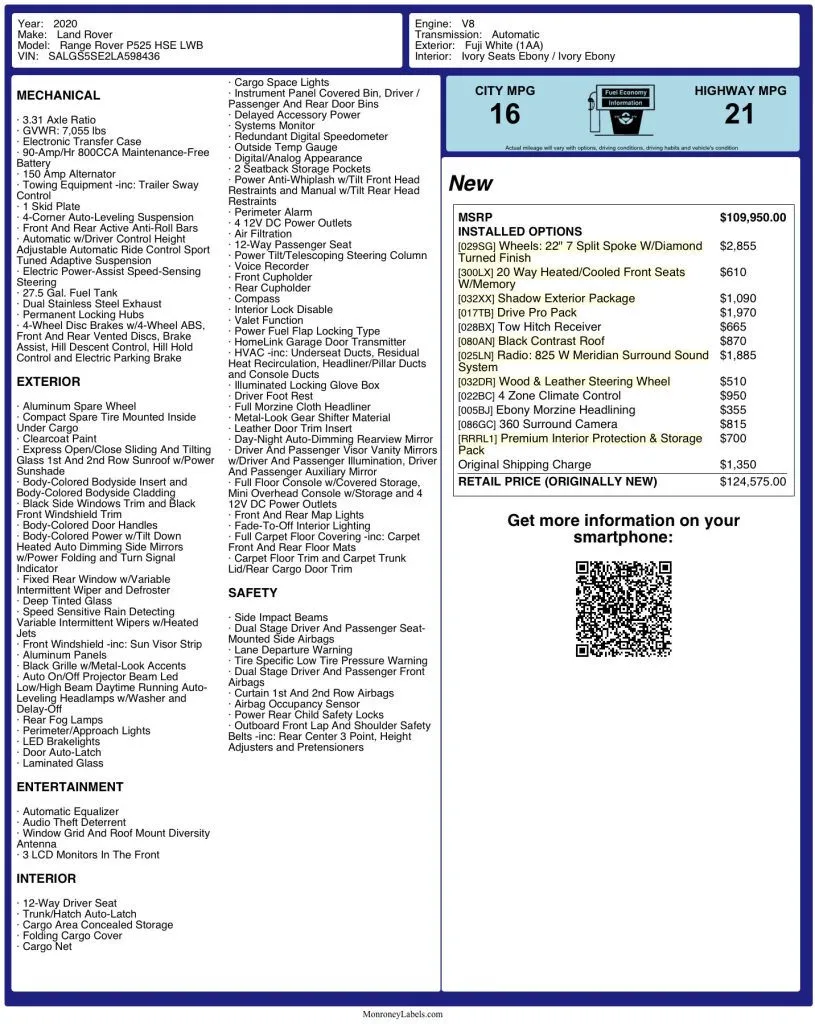
- Other sources
Some car manufacturers, like Ford, offer window stickers directly through their official parts website. However, these can be pricey and may not cover all models.
You might also find some helpful tips on car owner forums. For example, we’ve seen users share links to unofficial VIN decoders that can sometimes pull up window sticker information, though these often only work for specific makes and model years{{r/MachE [richcournoyer]. (2022, September 24). Use your VIN to download your detailed window sticker……HOW. [Online forum post]. Reddit. https://www.reddit.com/r/MachE/comments/xmi1pd/use_your_vin_to_download_your_detailed_window/}}. It’s worth checking out these forums if you’re having trouble finding the information elsewhere.
3. Refer to the manufacturer’s website
Manufacturer websites are usually a good place to look for factory specs (including MSRPs), but be aware that each brand might have its own way of doing things. The information available and how you access it can vary. Here’s a general overview of what you might expect:
- Search for the pricing list
Finding the MSRP for a current model-year car is usually pretty straightforward. Manufacturers tend to heavily promote their newest offerings, so you’ll likely find pricing and other details right on their official websites.
Just do a quick search for “[car brand] pricing” or “[car brand] full line pricing”, and you should land on the right page. Most manufacturers have a website section where you can build and price your desired vehicle, giving you a baseline MSRP for different configurations and packages.

Some manufacturers even keep pricing information available for older models, so you might get lucky there, too.
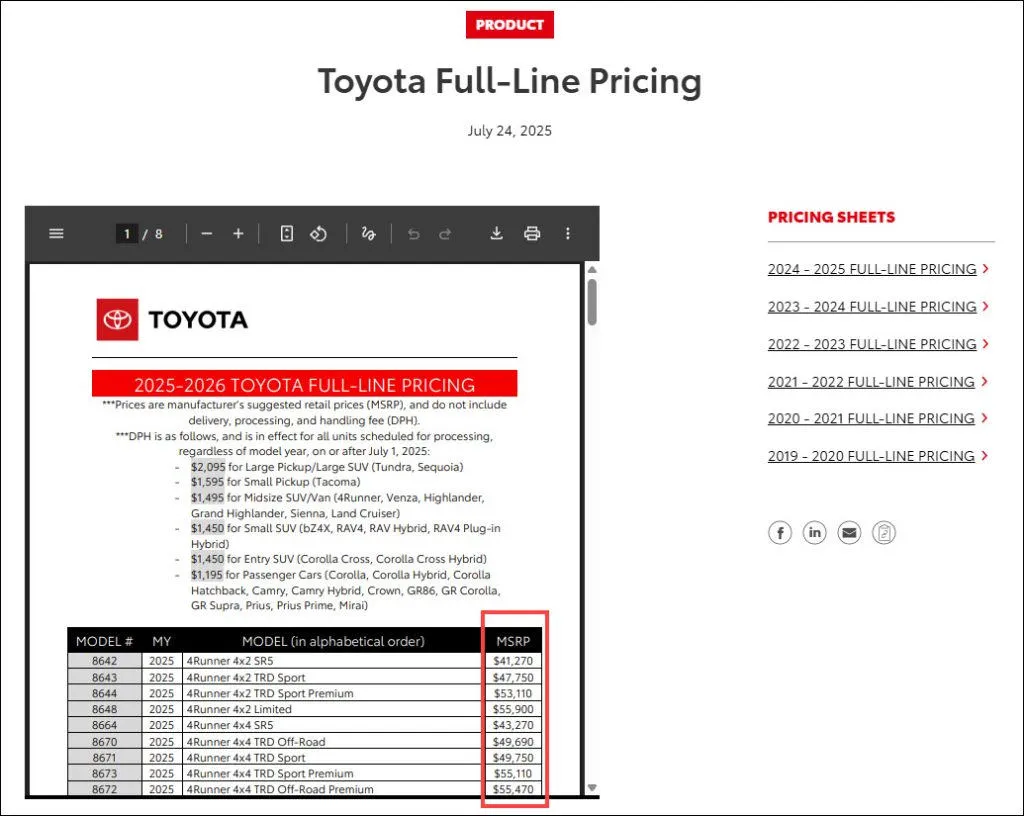
But the further back you go, the less likely it is to be readily available online. For older models, you’ll probably need to try the methods we discussed earlier, like using a VIN decoder or buying a window sticker.
4. Ask the dealership
Dealerships can sometimes be helpful in finding MSRP information.
If you’re looking for the original price of your own car, most dealerships are happy to help. A quick phone call or a visit to the dealership, providing the make, model, and year, should do the trick.
However, if you’re inquiring about the MSRP of a car you’re considering buying, it can be a different story. Some dealers might be less forthcoming with this information upfront, preferring to discuss pricing in person where they have more room to negotiate. There have even been reports of dealers quoting higher MSRPs{{Porsche Discussion Forums [TTgsts]. (2023, December 2). How to check the original MSRP of this 911. [Online forum post]. Reddit. https://rennlist.com/forums/992/1381118-how-to-check-the-original-msrp-of-this-911-a.html}}.
So, it’s always a good idea to cross-reference any MSRP provided by a dealer with reliable sources like independent automotive websites or other dealerships. Don’t be afraid to shop around and compare.
FAQs
1. What does MSRP usually include?
For cars, the MSRP usually includes: the base price of the vehicle, the cost of factory-installed options (like upgraded sound systems or leather seats), and the destination charge (the cost to ship the car from the factory to the dealership).
It might not include: taxes, title, registration fees, dealer fees (like documentation fees or advertising fees), or any additional accessories or services added by the dealer.
2. Why do I get different MSRPs from different sources?
It’s common to see different MSRPs for the same car on various websites. This isn’t usually a mistake; it’s just that different sources are including different things in the price.
Here are the main reasons for the price differences:
- Base model vs. fully-equipped
Many sites list the “starting at” price for a base model with zero options. Others show the price for a specific car with thousands of dollars in extras like a sunroof, premium sound system, and advanced safety features.
- The destination charge
Every new car has a mandatory shipping fee added to its price. Some websites include this in the MSRP they show, while others don’t, creating an instant price gap.
- Out-of-date information
Third-party car websites might not have the most current data. Automakers can adjust prices mid-year, so the price you see in an old review might be lower than what’s on the dealer’s lot today.
3. Why might someone pay above or below MSRP?
While MSRP is a recommended price, the actual selling price can vary depending on several factors.
- Above MSRP
You may need to pay above MSRP if you’re targeting a highly in-demand vehicle, especially a newly released model, a limited edition, or one with unique features. Dealers often add markup in these situations.
- Below MSRP
You’re more likely to find deals below MSRP for less popular models, vehicles nearing the end of their model year, or when there’s a surplus of inventory. Take advantage of end-of-month or end-of-year sales events when dealers are motivated to meet sales targets.
- At MSRP
Paying exactly MSRP might be a reasonable outcome in a balanced market where supply and demand are relatively equal. Some dealers, particularly those selling high-demand vehicles, might have a “no-haggle” policy and stick to the MSRP.
4. What are some other important prices I need to know?
Besides the MSRP, several other prices play crucial roles in car buying. Understanding these will help you navigate the process effectively and ensure you get a fair deal.
- Invoice price: This is the price the dealer pays the manufacturer for the vehicle. It’s lower than the MSRP and represents the dealer’s cost basis (with exceptions). Learn more about how to find the invoice price…
- Dealer fees: Additional charges added by the dealership, often for things like documentation, advertising, or dealer preparation. These fees can vary significantly between dealerships and are often negotiable.
- Out-the-door price (OTD price): This is the total price you’ll pay for the car, including everything: the negotiated vehicle price, taxes, title and registration fees, dealer fees, and any additional products or services (like extended warranties or paint protection). This is an important number to focus on, as it represents your actual cost.
- Trade-in value: If you’re trading in an existing vehicle, its value will be factored into the overall transaction. Get an independent appraisal of your trade-in’s worth before heading to the dealership to ensure you’re getting a fair offer. Online resources and used car pricing guides can help you estimate your trade-in value.
References

 View all of Arlee Hu's posts.
View all of Arlee Hu's posts.